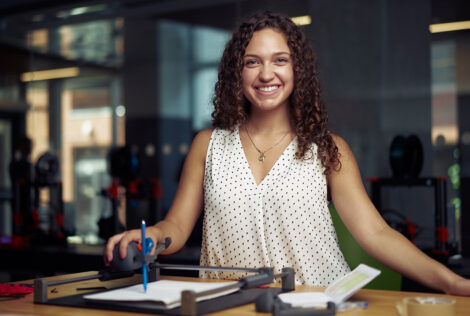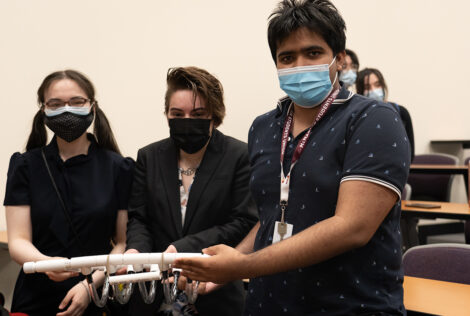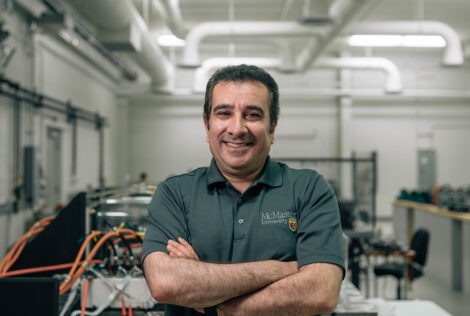
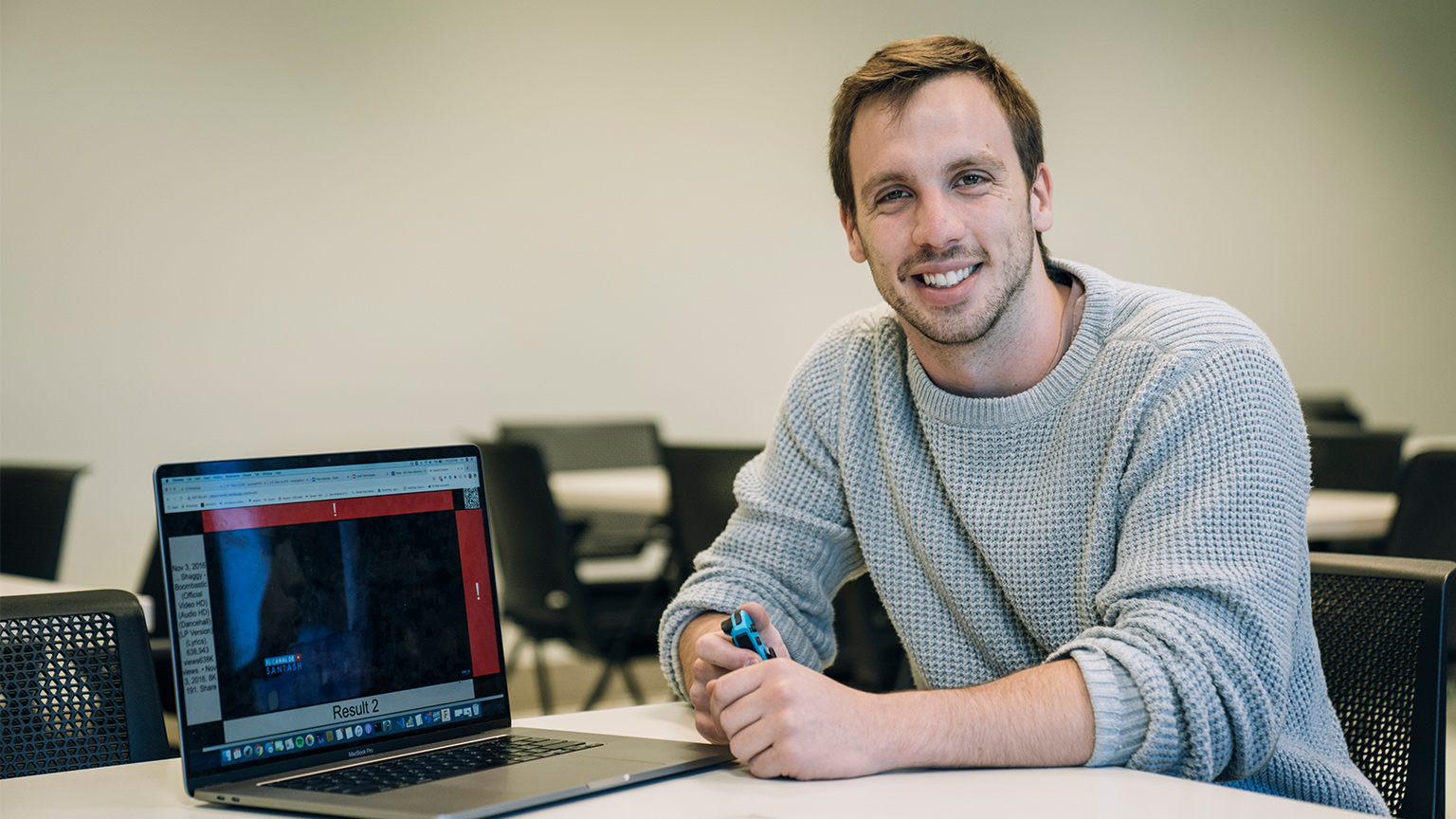
Information online needs to be made more accessible for visually impaired users, especially in a time where virtual spaces are used more than ever – that’s the mission behind Guy Meyer’s research.
During Meyer’s final year as a Mechatronics Engineering student in 2017, he became passionate about advancing technologies for people with visual impairments after Dr. Kourosh Sabri, an ophthalmologist from the Faculty of Health Sciences, visited his capstone class to speak about the challenges faced by his patients.
Access to information is a right. I wanted the focus of my work to be developing tools for the masses where inclusivity is the priority, and not an afterthought.
This drive led Meyer to pursue his Master’s in Computing and Software, where he’d deep dive into the world of assistive devices for web navigation.
Over the last two years, he focused on search engines and developed SerpUI – Search Engine Results Page User Interface, a free search engine tool that simplifies the Google search engine interface.
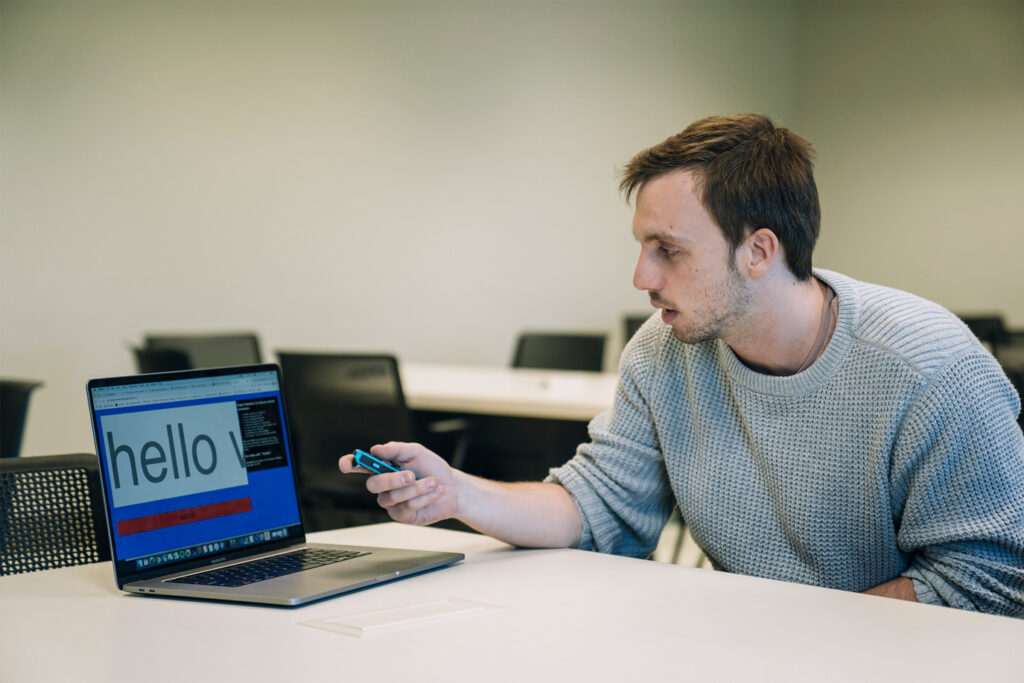
“I wanted to create a new tool that would improve the user experience of someone who is visually impaired, by making it faster and easier to navigate the web,” says Meyer, who recently completed his master’s program with guidance from Alan Wassyng, Mark Lawford, Shahram Shirani and Dr. Sabri.
“This is especially important now that most teaching and learning is happening in virtual spaces.”
Meyer is now collaborating with Dr. Sabri to develop a tool that would allow eye assessments to be completed by physicians remotely from patients’ homes.
“We ended up developing a remote testing room, where the patient would see a blank screen on their computer and Dr. Sabri could dispatch tests and assess them virtually,” Meyer says.
“There’s so much potential to a technology like this, both for visually impaired people and the professionals who care for them.”
How SerpUI works
SerpUI is designed to minimize the steps needed for a visually impaired user to make a simple search on Google.
The user speaks into their computer’s microphone describing what they want to search on Google, while a real-time speech-to-text algorithm powered by Google Cloud Services prompts the user to verify their search item.
The background will then change to a vibrant blue and the user will hear a loud “Ding” sound once the search item is successfully submitted.
Then, the user is redirected to SerpUI where the Google search results are presented in high contrast with interactive audio feedback. To flip through results, the user can either use their keyboard or a Nintendo JoyCon controller connected via Bluetooth. Try SerpUI here.
“Great designs tend to impress us by their simplicity,” says Wassyng, one of Meyer’s supervisors on SerpUI.
“Guy succeeded in taking a complex task that depends on the user’s ability to follow visual clues and making it simple and predictable enough for visually impaired kids to use. They can use this solution to perform complex tasks that may otherwise be much more difficult for them.”
Read the team’s literature review of computer tools for blind and visually impaired users.
Learning from the end-user
Meyer’s projects, SerpUI and the virtual assessment room, were made possible by feedback and consultations with field experts who have lived experience or work with visually impaired students.
Ka Yat Li, a kinesiology student at York University who is blind, and Valerie Kitazaki, a vision resource teacher with the York Region District School Board (YRDSB) were instrumental in informing what factors to consider in Meyer’s designs.

“Hearing Guy’s ideas about web access was definitely interesting because there’s a lot we can improve on. Platforms like Instagram, which are image-heavy, are difficult to navigate because screen readers and assistive technology is mostly designed for text. It’s always been a big issue making sure that different materials are presented in an accessible way,” says Li, who uses tools like an open-source screen reader and braille embosser to complete his coursework in kinesiology.
“It’s only been acknowledged that it’s such a big issue when the pandemic hit – when a lot of people suddenly had to access their content digitally. We’re starting to see more companies recognize this and ask for help, which is good to see. At the same time, there’s a knowledge gap in developing websites and apps to be inclusive of blind users,” he adds.
Kitazaki is one of 16 vision resource teachers in the YRDSB and specializes in teaching orientation and mobility skills for blind and visually impaired students.
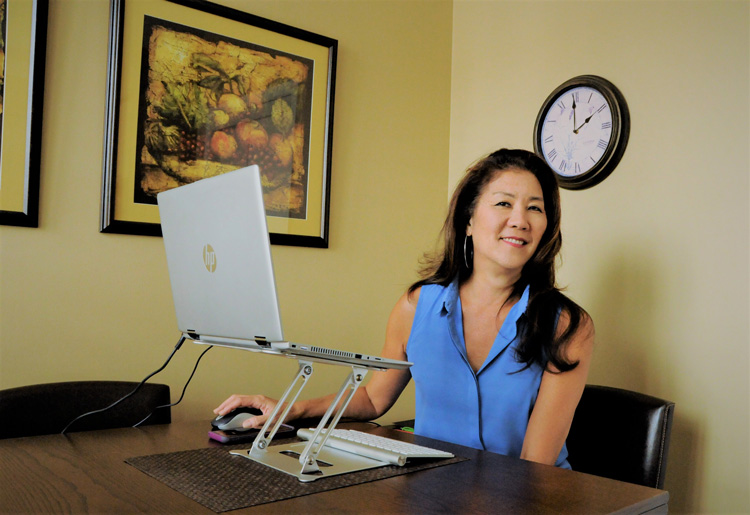
“The job of the vision teacher is to communicate with the classroom teacher on how to make documents accessible – for example, documents on Google Classroom during remote learning,” says Kitazaki.
“As a vision resource teacher thinking about students, I’d love to see something come out of this project so that more visually impaired students can use it.”
As part of the Computing and Software Capstone class in 2019, Li and Kitazaki led a “Day of Innovation” where students learned how visually impaired users access different technologies to navigate physical and virtual spaces.
“Trying to make tools more affordable and giving people different options is super important, and I think the open-source approach is valuable because there’s more collaboration between users and developers,” says Li.
Meyer also visited the W. Ross Macdonald School in Brantford, a school designed for blind and deafblind students, to learn about what visually impaired students have access to and what can be improved.
“One of the most interesting aspects of Guy’s work is that while his advisors thought that the problem visually impaired youth needed help with was navigation of physical spaces, Guy went out and talked to them, listened and learned that what they really wanted was a way to better navigate cyberspace,” says Lawford, Chair of Computing and Software, McMaster Engineering.
“This is a very human project. We ended up taking a very old problem and starting from the bottom because there’s not much that exists yet for it,” Meyer says.

